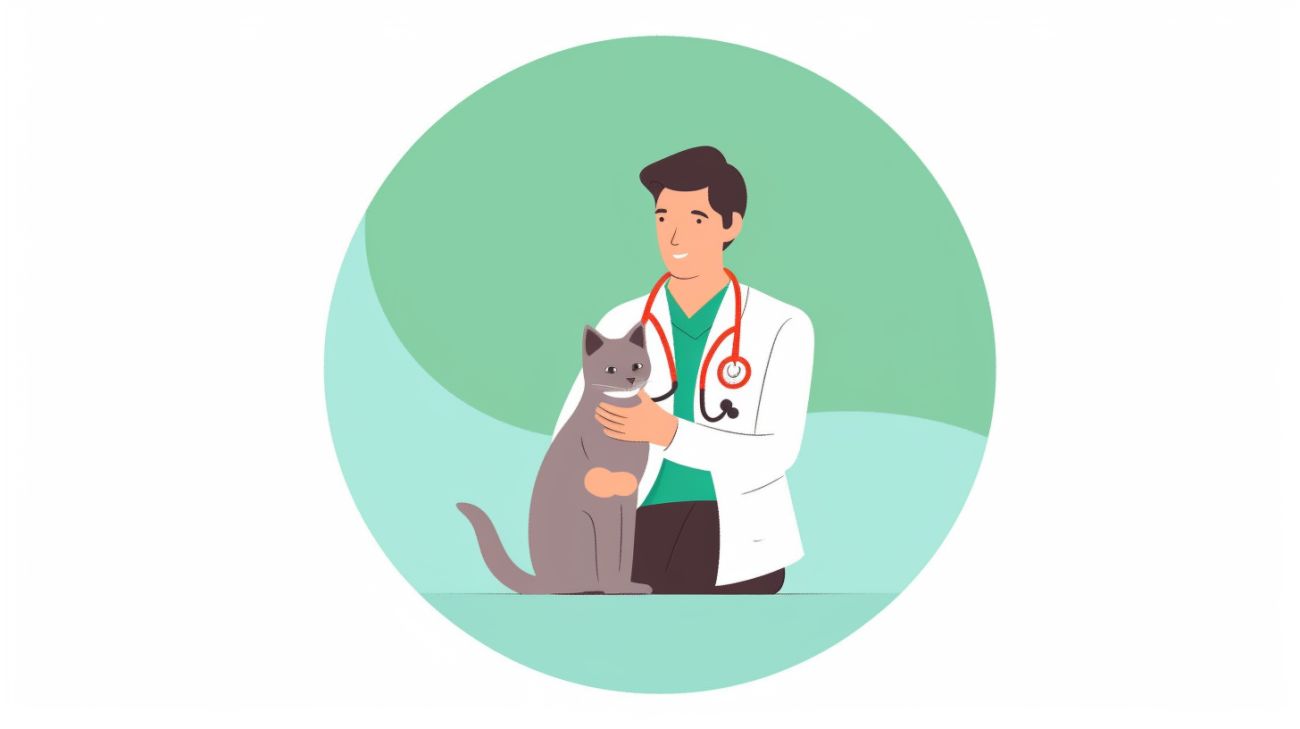Inhoud
Part 1: Understanding the Different Types of Lost Cats
Lost Cats
Curiosity: Cats are naturally curious creatures. They may wander off in pursuit of a bird or to investigate an interesting scent.
Hunting: Even domesticated cats retain their hunting instincts. If they spot potential prey, they might forget their way back home.
Unfamiliar surroundings: If you've recently moved or your cat has managed to escape during a vet visit, they may get disoriented and unable to find their way back home. Read our guide on how to help your cat after moving house.
Fear or stress: Loud noises like fireworks or thunderstorms can scare cats into bolting from their safe space. Learn how long a scared cat will hide.
In heat: Unspayed or unneutered cats might roam in search of a mate. Check our article on female cats in heat going missing.

Stray Cats
Fear of humans: Stray cats may have had negative experiences with people and can be skittish or even hostile. Learn how to catch a lost cat.
Health issues: Without regular care, strays are more susceptible to diseases or injuries. Our article on stolen cats and pet theft laws may help you understand the risks.
Overpopulation: Stray cats, especially those not spayed or neutered, can contribute to overpopulation, leading to more homeless kitties.
Feeding: While well-intentioned, feeding strays without a long-term plan can lead to dependency and more substantial colonies.
Shelter: Strays need shelter from the elements, which can be difficult to find in urban environments.

Feral Cats
Fear of humans: Feral cats view humans as threats and will often hide or act defensively.
Inability to adapt to home life: Feral cats are not suited to living in a domestic environment.
Health risks: Like strays, ferals face higher health risks and may carry diseases.
Overpopulation: Feral cats contribute significantly to the overpopulation problem.
Part 2: Who to Call for a Lost Cat
Local Animal Shelters
Online Search: Use search engines to find animal shelters in your area. Input search terms like 'animal shelter near me' or 'local animal shelter' to get a list of nearby facilities.
Directory Assistance: Call 411 or use an online phone directory to locate shelters in your vicinity.
Community Boards: Check community notice boards in grocery stores, libraries, or community centers. They often have information about local animal services.
Local Government Websites: Your local government's website may have a list of registered animal shelters and their contact details.
Word of Mouth: Ask your neighbors, friends, or family members for recommendations.
Veterinarians and Animal Clinics
Scanning for Microchips: If your cat is microchipped, vets can scan the chip to retrieve your contact information. Learn more about how to find a microchipped cat.
Lost and Found Boards: Many clinics have bulletin boards where people can post about lost and found pets. You can also check out lost cat signs to know what to look for.
Networking: Vets usually have extensive networks within the local pet community and can spread the word about your missing cat. Discover the power of targeted ads in finding lost cats.
Medical Care: If a lost or injured cat is brought in, they can provide immediate medical attention.

Animal Control Agencies
Local Government Websites: Check your local government's website for contact information for your local animal control agency.
Non-Emergency Police Line: If you're unsure of how to reach animal control, you can call your local non-emergency police line for guidance.
Online Search: Search online for 'animal control' followed by your city or county name to find your local agency's contact information. You can also find more information on reporting a missing cat.
Directory Assistance: Use a phone directory or call 411 to find your local animal control agency.

Lost and Found Pet Websites and Social Media Groups
They offer a wide reach: Your lost cat notice can potentially be seen by thousands, if not millions, of people, increasing the likelihood of someone spotting your cat.
They provide real-time updates: Online platforms allow you to post instant updates and stay informed about any potential sightings or leads.
They are a source of support: Being part of these groups can provide emotional comfort as others share their own stories and provide encouragement. To learn about how other people have coped during the search process, check out my cat went missing for a month.
They facilitate easy sharing: People can easily share your lost cat post with their own networks, further expanding your reach.
They are accessible: Most people have at least one social media account, making these platforms a practical option for most pet owners.

Your lost cat notice can potentially be seen by thousands, if not millions, of people.
Part 3: Additional Resources and Contacts for Lost Cats
Creating a Lost Cat Flyer
Wide Distribution: Flyers can be posted in numerous places, reaching a vast audience.
Tangible Reminder: A physical flyer serves as a constant visual reminder for those who see it.
Local Impact: Flyers are particularly effective in reaching out to your local community.
Flexibility: Flyers can be tailored to include all the relevant details about your cat.
Passive Search: Even when you're not actively searching, your flyer is working for you.

Once your flyer is ready, distribute it in your neighborhood, local stores, community centers, and vet clinics.
Using Pet Amber Alert Services
Rapid and wide-reaching alerts: These services send immediate notifications about your lost cat to neighbors, pet-related businesses, and local pet rescuers in your area.
Professional, attention-grabbing lost pet posters: They create digital lost pet flyers, complete with your cat's photo and details, that you can share on social media or print out for physical distribution. Make sure to follow the lost kitten flyer essentials to maximize your search efforts.
Customized voice broadcasts: Some services will send automated phone calls to people in your vicinity, spreading the word about your lost pet and increasing the chances of someone spotting them.
Online monitoring: Certain Pet Amber Alert services will monitor online platforms for mentions of found pets that match your cat's description. Learn more about cat amber alert and what every cat owner should know.
Guidance and support: These services often provide advice and assistance to help you in your search, such as tips on the most effective ways to search for a lost cat. For additional guidance, check out our comprehensive lost cat advice.

Contacting Breed-Specific Rescue Groups
Breed recognition: Members of these organizations are likely to recognize your cat's breed at a glance, making them more likely to spot your cat if they come across them.
Connected community: These groups often have wide networks of breed enthusiasts who can help spread the word about your missing cat.
Expert advice: They may offer breed-specific advice, such as behavioral traits or hiding tendencies, that could help you in your search. Understanding lost cat behavior can be crucial to your search efforts.
Online platforms: Many breed-specific rescue groups have active social media profiles or websites where they can share your lost cat's details.

Utilizing Pet Finding Apps
1.
GPS Tracking: Some apps connect to a GPS tracker on your pet's collar, allowing you to locate them in real time.
2.
Community Alerts: Other apps can alert fellow users in your area about your lost cat, expanding your search team.
3.
Lost Pet Database: Many apps maintain a database of lost and found pets, which can help identify your cat if someone else finds them.
4.
Virtual ""Lost"" Posters: These apps often allow you to create and share a digital ""lost cat"" poster, spreading the word more quickly than physical flyers.
5.
Advice and Resources: Some apps also provide advice and resources to help you in your search, such as who to call if you find a lost cat.
To use these apps effectively, download your chosen app and create an account.

Contacting Local Police Departments
Non-Emergency Call: Don't dial 911 for a lost cat. Use the non-emergency number.
Provide Detailed Information: The more information you provide, the easier it will be for them to identify your cat if they're found.
Follow Up: Keep in touch with the police department and let them know if your cat is found.
Be Polite: Remember, they're helping you out in their spare time. A little gratitude goes a long way.

Reaching Out to Local Pet Stores
Drop by in person: There's nothing quite like a heartfelt, face-to-face conversation. Swing by your local pet store and share your situation. They may allow you to leave a flyer or even post one in their window.
Make phone calls: If the stores are too far to visit or if you're pressed for time, a phone call can be just as effective. Don't forget to follow up with an email that includes a photo of your cat.
Leverage the store's social media: Many pet stores have a dedicated social media presence. Ask them to share your lost cat's information on their platforms to reach a wider audience.
Connect during community events: Pet stores often host events like adoption drives or pet-friendly gatherings. These can be perfect opportunities to spread the word.
Maintain regular contact: Keep the communication lines open with updates, and don't forget to show your appreciation for their help.

Informing Postal Workers and Delivery Drivers
Approach them politely: A friendly conversation can go a long way. Explain your situation, and if possible, provide them with a flyer or a photo.
Utilize their regular routes: These folks are familiar with their regular routes, and they might have seen your cat in their travels. Ask them to keep an eye out.
Ask for their advice: They might have helpful tips or advice based on their extensive local knowledge.
Offer a token of appreciation: A small token of appreciation like a cup of coffee or a thank you note can encourage them to join your search actively.
Keep them updated: Regular updates can keep them engaged and aware of your situation. To stay on top of your search, make use of technology to aid your search.

Contacting Boarding Facilities and Groomers
Give them a call or visit: Share your predicament and ask them to contact you if they hear anything.
Provide them with a detailed description or photo: The more information they have, the better they can assist you.
Request to leave a flyer: If they have a community board or a visible area, ask to leave a flyer.
Follow up regularly: Keep in touch and provide updates on your search. Regular contact keeps your plight at the forefront of their minds.
Express your gratitude: A little gratitude goes a long way. Thank them for their help, regardless of the outcome. And, if your cat is still missing after a while, learn when to stop looking for a lost cat.
Regular contact keeps your plight at the forefront of their minds.

Reporting to National Pet Recovery Databases
To report a lost cat, visit the database's website and look for the option to file a lost pet report.
You'll need to provide as much information as possible, including your cat's name, breed, color, and any distinguishing marks. Photos are also helpful.
Regularly check the database for found cat reports that match your cat's description.
Some databases also offer alert services, where they will notify you if a cat matching your description is reported as found.

Part 4: Preventing Future Cat Losses
Microchipping and Collars
Microchips are tiny devices implanted under your cat's skin. They contain a unique number that can be read by a special scanner, linking to your contact details in a database.
Collars with ID tags are another way to identify your cat. The tag should include your cat's name and your contact number.
When fitting a collar, make sure it's not too tight or too loose. You should be able to fit two fingers comfortably between the collar and your cat's neck.
Remember to keep your contact information up-to-date on both the microchip and the ID tag.

Cat-Proofing Your Home
Check all windows and doors to make sure they close securely. Cats are experts at squeezing through small gaps!
If you have a yard, consider installing cat-proof fencing to prevent your cat from leaving the property. Learn more about cat-proofing your yard for additional tips.
Remove any toxic plants or substances that could harm your cat. Discover the most common reasons for cat disappearance to avoid potential hazards.
Provide plenty of indoor entertainment for your cat, like toys and scratching posts, to lessen their desire to venture outside. Explore effective strategies to find a cat in your house if they happen to go missing indoors.
Cats are experts at squeezing through small gaps!

Training and Routine
Try to feed your cat at the same times each day.
Spend regular quality time with your cat, including play sessions and grooming.
Consider leash training your cat, so they can safely explore the outdoors under your supervision.

FAQ
How long should I wait before calling someone about my lost cat?
Don't wait at all! The sooner you reach out, the higher your chances of finding your cat. Every minute counts.
Can I call the same hotlines and helplines for missing indoor and outdoor cats?
Absolutely! Hotlines and helplines are there for all missing cats, whether they're indoor or outdoor.
What information should I provide when reporting my lost cat?
Describe your cat's appearance, breed, and any distinguishing features. Also, share when and where they were last seen.
Should I offer a reward for my lost cat's return?
Offering a reward can motivate more people to help. But remember, it's not a must.
How can I tell if a cat is lost, stray, or feral?
Lost cats usually look well-groomed and may be anxious. Strays can be approachable but look unkempt. Ferals avoid humans and are self-sufficient.
What should I do if I find a lost cat but cannot keep it?
Call your local shelter, vet, or animal control. They can help ensure the cat is safe and returned to its owner.
Are there any legal obligations when finding a lost cat?
Yes, in many places, you're required to report a found cat to local authorities or shelters.
How can I help a stray cat without adopting it?
You can feed the cat, provide temporary shelter, or call a local rescue group that works with strays.
Conclusion

Prevention is just as important as knowing who to call when a cat is missing.


